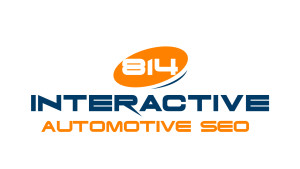If you are trying to get your dealership’s website to rank highly on one or all of the major search engines, your search engine optimization has to be on point.
Many dealerships will believe that they are implementing all of the right strategies and doing everything right, but will not see any upticks in their page traffic or their search engine ranking.
This can become extremely frustrating, especially when you realize that more than half of all traffic that comes to your dealership’s site is going to be through organic search results.
When your SEO isn’t working or has stopped working, you might want to take a look at some of these aspects of your campaign and see if they are actually in line with the rest of your techniques:
1. Your budget is too small.
You can’t invest a single dollar and expect a million dollars to be the result.
If you want big results, you have to be willing to make a big investment.
A small investment will sometimes do the trick, but if in some cases, having a very small budget for SEO can hurt your ability to see the results you want.
If you are not seeing the results you want, take a look at your budget and see if you are actually investing enough money into search engine optimization.
A lack of budget can result in lower quality content, un-researched keywords, and even a sub-par website.
If you want your dealership to have sub-par content, design, and keywords, then not being willing to pay for quality is totally fine.
On the other hand, if you’re looking to be seen as a quality dealership, you’ll want a website and content that reflects that.
2. You don’t have enough content.
Many dealerships struggle with getting enough content on the webpage.
What is there, really, to write about?
What most site visitors are looking for is not content about the cars, but contact information and a list of the vehicles you have on your lot, so they know how to find you and whether or not you are worth finding, right?
This is where a blog and a few strategic pieces of content can come in.
A blog gives you the ability to add new content to your website every week.
This content should be as keyword-rich as it is relevant and useful—not just an attempt to get people to buy from your dealership.
You can also add content to each individual car’s page.
Including keywords that will bring people looking for your brand in your area in this content will help draw more traffic to your website and will allow you to provide some useful information about that vehicle that could sway a reader towards wanting to purchase it.
3. Your automotive SEO hasn’t been updated in a while.
While the very basic features of SEO haven’t changed much since the concept was first introduced, the particulars of what algorithms look for when they scan a website definitely has.
This means that if your SEO is more than a year or so old, it could be optimized for an algorithm that no longer exists.
Some dealerships, especially those that have been in business for a long time, haven’t looked at their SEO since it was first implemented years and years ago.
If this is your situation, it’s time to review your SEO and see what improvements or updates need to be made to the campaign.
What worked five years ago doesn’t necessarily work anymore.
Some ranking factors that were once very important are no longer important at all. If in doubt, enlist a SEO firm that can review your current campaign and build you a new one.
4. Your page takes forever to load.
This is a major boon for dealerships.
You want to be able to include videos and pictures of the vehicles that you offer, but if your website takes a long time to load, you might not be able to get anyone to stick around long enough to care that your site offers lots of value and that your dealership offers great cars.
The more media you have on your website, the harder it’s going to be to get it to load quickly.
That doesn’t mean, however, that it’ll be impossible to get your website to load quickly.
As your developer about what steps they can take to make your website load faster, including switching to a different host or using a widget that makes only the portion of the website the viewer is actually looking at load, saving images and videos to load until the visitor is actually going to view them.
5. You’re not using the right keywords.
This is one of the most common mistakes in the SEO game, and a fairly common mistake when it comes to car dealerships and their search engine optimization.
If you sell Ford vehicles, it seems reasonable to try to rank for the keyword “Ford.”
The problem is that you will never be able to top Ford’s own brand website and dozens of other dealerships also trying to rank for that generic keyword.
The more targeted your keyword is, to your location and to the expectations of your customer, the more success you are going to have.
You’ll not only see higher page rankings, you’ll also see more of the traffic on your website convert into people arriving on your lot.
Your keywords should be location-specific and should reflect the buying desires of the people most likely to purchase your vehicles.
Keyword research should always be a big part of any automotive SEO campaign.




